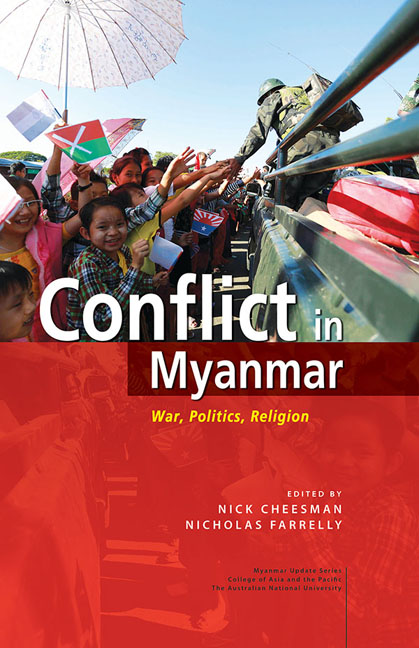1 - Myanmar's conflicted politics
from Part I - Introduction
Published online by Cambridge University Press: 22 July 2017
Summary
BROKEN LIVES, BITTER HOPES
One of the sad facts about the long history of conflict in Myanmar is that nobody knows how many people have died, how many lives have been broken. Perhaps a million? Maybe more? In the civil wars, some of which have raged since the 1940s, the mountains and valleys have echoed with gunfire and artillery blasts, with shouted commands, and with the screams of the people as they have fled for their lives. Damage still pockmarks the landscape, landmines often lie unmapped, a hazard to everyone, and vast territories remain locked in standoffs between the government and its remaining opponents. Round after round of negotiations between these ethnic armed groups and the central government have enjoyed only mixed success. In some areas, central authorities have accepted local governance arrangements that see armed ethnic groups control substantial economies. They levy local fees and taxes, determine what gets taught at school, and inculcate society with their values of resistance and ethnic pride. These arrangements have often proved unstable, with ceasefires teetering, held together only by economic largesse and grim appreciation that the costs of war are immense. Where compromise cannot be found, Myanmar's people suffer through long-running jousts, which can sometimes escalate into full-blown battles, forcing thousands from their homes. During the past half-decade — even as life in Myanmar improved for tens of millions of people — difficult conditions have remained in parts of the Shan, Kachin and Rakhine States. In certain areas, ethnic armed forces have battled hard against the central government, unwilling to concede ground to what they consider occupying forces.
In the past, there was in fact no clear distinction between Myanmar's armed forces, often known by their Burmese name, the Tatmadaw, and the central government. Under the State Peace and Development Council (SPDC) that ruled until 2011, Myanmar's military high command and executive leadership were one-and-the-same (see Seekins 1999; Rogers 2009; Farrelly 2013). In practice, this system gave army officers, whatever their rank, dual responsibilities as both administrators and war-fighters. For instance, the head of Myanmar's Northern Command, usually a major general based in the Kachin State capital, Myitkyina, also served as the chairman of the Kachin State Peace and Development Council.
- Type
- Chapter
- Information
- Conflict in MyanmarWar, Politics, Religion, pp. 3 - 22Publisher: ISEAS–Yusof Ishak InstitutePrint publication year: 2016

